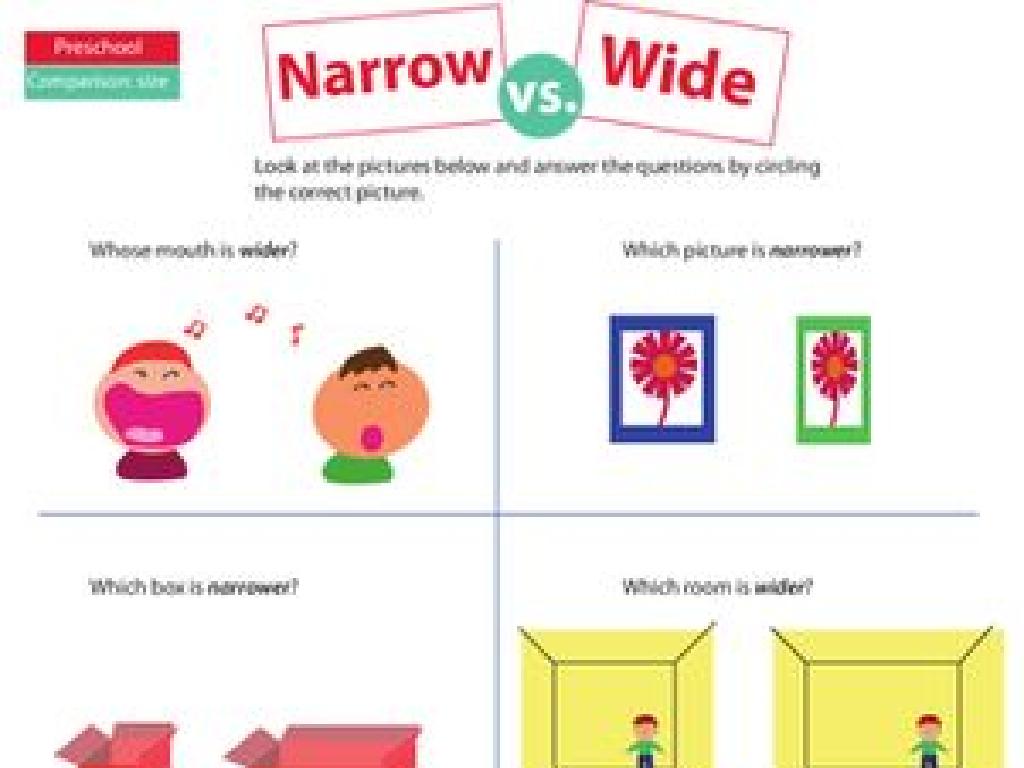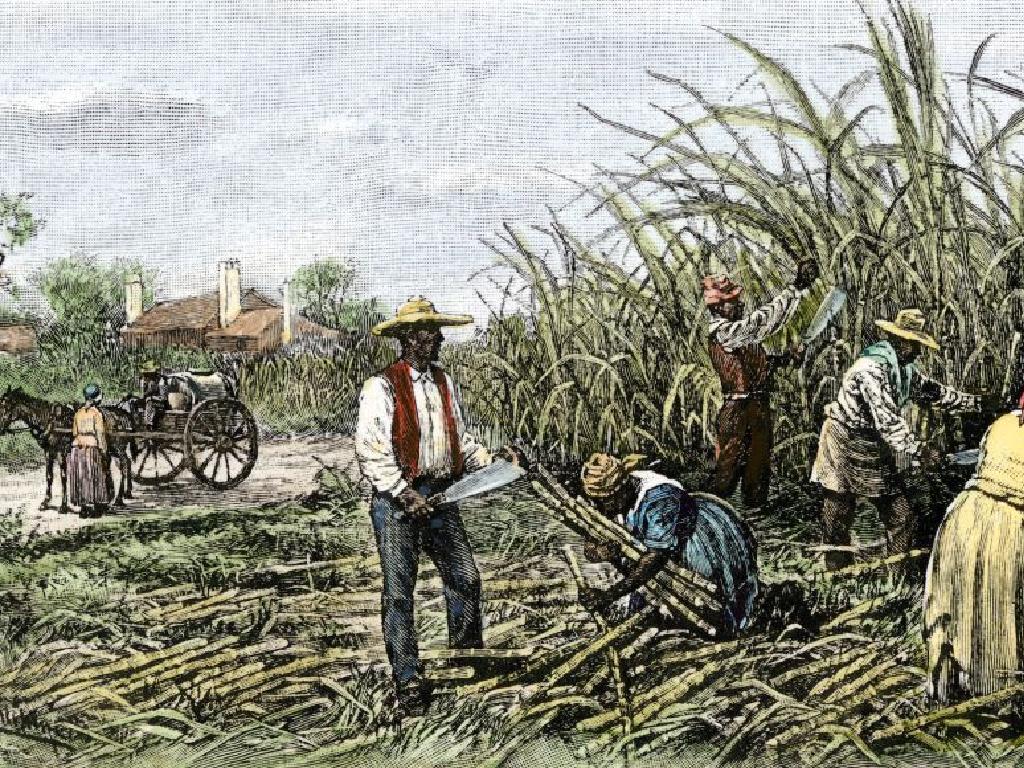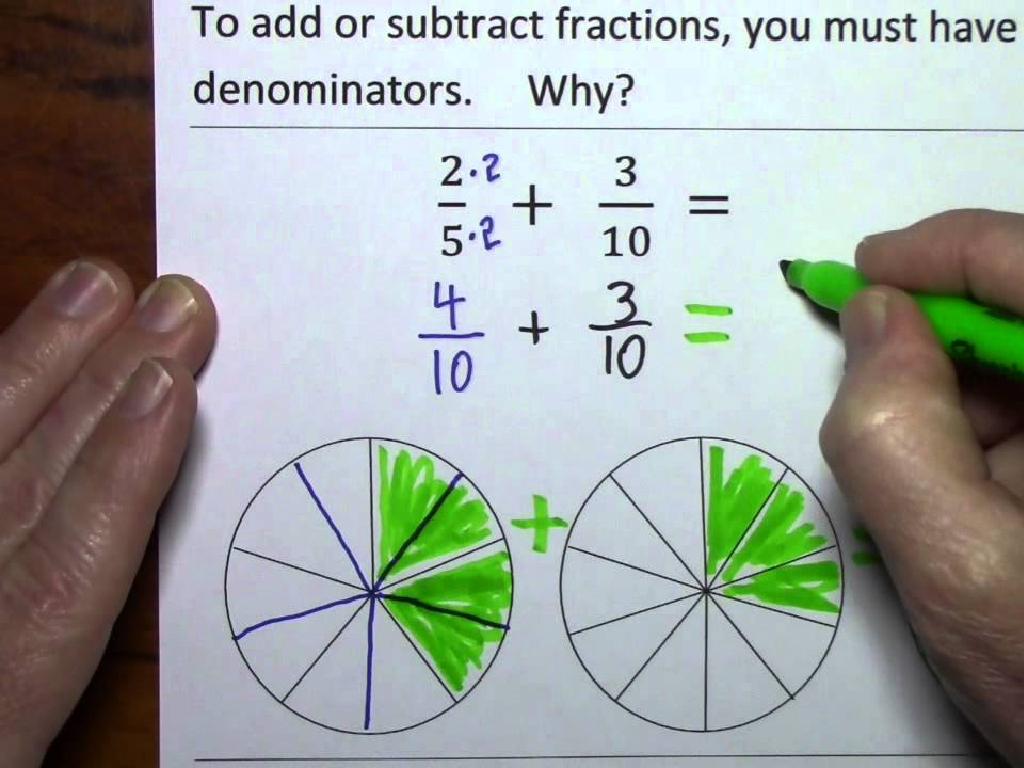Identify The Narrative Point Of View
Subject: Language arts
Grade: Sixth grade
Topic: Point Of View
Please LOG IN to download the presentation. Access is available to registered users only.
View More Content
Exploring Narrative Point of View
– Understanding narrative structure
– Defining point of view
– The perspective from which a story is told
– Significance of point of view
– It shapes how readers experience the story
– Examples of different points of view
– First person: ‘I’, Third person: ‘he/she’, Second person: ‘you’
|
This slide introduces the concept of narrative point of view to sixth-grade students. Begin by discussing the structure of narratives and how they are constructed to tell a story. Then, define ‘point of view’ as the lens through which readers see the events in the story. Explain why understanding the point of view is crucial, as it deeply influences the reader’s connection with the characters and the engagement with the plot. Provide examples of different points of view, such as first person, second person, and third person, and how they change the storytelling. Encourage students to consider how the story might change if told from a different point of view.
Exploring Narrative Points of View
– First Person POV
– The narrator is a character in the story: ‘I’, ‘me’, ‘my’
– Second Person POV
– The narrator speaks directly to the reader: ‘you’, ‘your’
– Third Person POV
– The narrator is outside the story: ‘he’, ‘she’, ‘they’
|
This slide introduces students to the concept of narrative point of view (POV). First Person POV uses ‘I’ or ‘we’ and allows the reader to see the story through the narrator’s eyes. Second Person POV, less common, uses ‘you’ and directly addresses the reader, often used in instructions or choose-your-own-adventure stories. Third Person POV uses ‘he’, ‘she’, or ‘they’ and provides a broader perspective on the story. Encourage students to identify these POVs in books they read. Provide examples from popular children’s books to illustrate each POV. This understanding will enhance their reading comprehension and writing skills.
First Person Point of View
– Narrator’s perspective storytelling
– The story is told by the character in the story
– Utilizes ‘I’, ‘We’ pronouns
– Personal pronouns are used to show the narrator’s direct experience
– Example: ‘I walked my dog in the park.’
– This sentence shows the narrator’s personal action
|
This slide introduces the concept of the first-person point of view in narrative texts. It is important for students to recognize that in this point of view, the narrator is a character within the story, often the protagonist or a central character. They tell the story from their own perspective, which can provide a deep understanding of their thoughts and feelings. The use of ‘I’ and ‘We’ pronouns is a key indicator of the first-person narrative. The provided example helps students see how these pronouns are used in a simple sentence. Encourage students to find more examples of first-person narrative in books they are reading or have read in the past.
Understanding Second Person Point of View
– Speaks directly to the reader
– The narrator addresses the reader as ‘you’, making them feel part of the story.
– Utilizes ‘You’ pronoun
– Common in instructions or choose-your-own-adventure books.
– Example of Second Person POV
– ‘You turn the corner and come face to face with a dragon.’
|
This slide introduces the second person point of view, which is less common in literature but very engaging as it involves the reader by addressing them directly. It’s typically used in do-it-yourself guides and interactive stories. The use of ‘you’ can make the reader feel like an active participant in the narrative. Provide examples from popular choose-your-own-adventure books or interactive games to illustrate this point of view. Encourage students to think of situations where they are directly addressed and how that influences their engagement with the text.
Understanding Third Person Point of View
– Narrator is outside the story
– The storyteller is not part of the story
– Uses pronouns ‘He’, ‘She’, ‘They’
– These pronouns indicate someone else is being talked about
– Example: ‘She walks her dog in the park.’
– This sentence shows third person narration by talking about ‘She’
|
This slide introduces the concept of the third person point of view in narratives, where the narrator is not a character within the story but an outside observer. Emphasize that the use of ‘he’, ‘she’, and ‘they’ is a key indicator of this point of view. Provide the example ‘She walks her dog in the park.’ to illustrate a simple third person sentence. Encourage students to think of their own examples and to identify the narrative point of view in books they are currently reading. Discuss how this perspective can give the reader a broader understanding of the story.
Identifying Narrative Point of View
– Look for pronouns in the text
– ‘I’ for first-person, ‘you’ for second-person, ‘he/she/they’ for third-person
– Understand the narrator’s role
– Is the narrator a character in the story or an outside observer?
– Practice with examples
– Analyze passages to determine the point of view
|
This slide aims to help students identify the narrative point of view by examining pronouns and understanding the narrator’s role. First-person narratives use ‘I’ or ‘we,’ making the reader privy to the narrator’s personal experiences and thoughts. Second-person, though rare, directly addresses the reader as ‘you,’ often used in instructions or choose-your-own-adventure stories. Third-person narratives use ‘he,’ ‘she,’ or ‘they,’ and the narrator may be omniscient or limited in knowledge. Encourage students to practice by reading passages and identifying the point of view, discussing how it affects their connection to the story. Provide examples from well-known texts to illustrate each point of view.
Activity: Point of View Detective
– Read a short story as a class
– Determine the story’s point of view
– Is it first, second, or third person POV?
– Discuss the impact on story comprehension
– How does POV influence our interpretation?
– Reflect on the narrative perspective
|
This class activity is designed to enhance students’ understanding of narrative perspectives. Begin by reading a short story together, ensuring that students are actively engaged and following along. After reading, guide the class in identifying whether the story is told from the first, second, or third person point of view. Engage the students in a discussion about how this perspective affects their understanding and feelings about the story. Encourage them to provide examples from the text that demonstrate the point of view. This activity will help students to see how narrative point of view can shape a reader’s experience of a story. Possible stories to use could include classic fables or contemporary short stories suitable for their reading level.
Class Activity: Exploring Narrative Points of View
– Break into small groups
– Each group gets a story excerpt
– Determine the story’s point of view
– Is it first, second, or third person narrative?
– Present your findings to the class
|
This activity is designed to help students work collaboratively to identify different narrative points of view. Divide the class into small groups and provide each with a unique story excerpt. Encourage them to discuss within their groups to determine whether the narrative is in the first, second, or third person. Provide guidance on clues that can help identify the point of view, such as pronouns and how the narrator refers to characters. After the activity, each group will present their excerpt and explain how they identified the point of view. This will help students learn from each other and reinforce their understanding of the concept. Possible excerpts can include classic literature, contemporary stories, or even student-written narratives to add variety to the activity.
Wrapping Up: Points of View
– Review narrative point of view
– Homework: Rewrite a story paragraph
– Pick a paragraph from any story
– Choose a different point of view
– Change it to first, second, or third person
– Share your paragraph next class
|
As we conclude today’s lesson, let’s recap the different types of narrative points of view we’ve discussed. For homework, students are to select a paragraph from a story they have read and rewrite it from a different narrative perspective. This exercise will help solidify their understanding of how the point of view can change a reader’s experience of a story. Encourage creativity and remind them that there are no right or wrong answers, just different perspectives. In the next class, we’ll share these paragraphs and discuss how the change in point of view alters the tone and information presented in the story.






